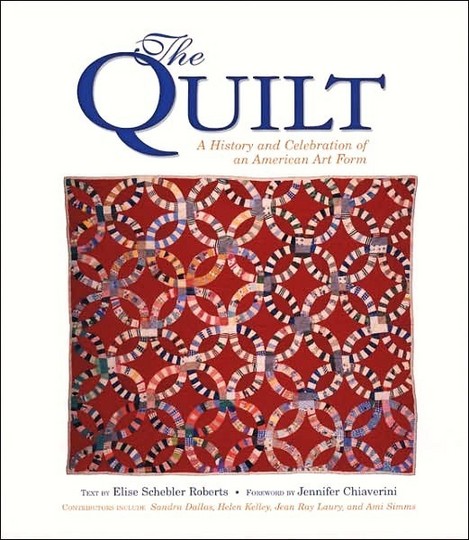
Quilts are an excellent medium for telling a story that is nearly too grand for words. Quilt blocks can act as chapters in a book facilitating the maker's story, and encouraging the viewers to investigate further.
One such quilt, the Oklahoma History Quilt, was donated to the Oklahoma Historical Society in 1935. This remarkable quilt, made by Oklahoma City native Camille Nixdorf Phelan, is an embroidered masterpiece depicting 300 years of Oklahoma history. The quilt is a testament to one quilter's tenacity and love of history.
In the 1920s, Camille had a passion for embroidery and enjoyed copying pictures to cloth using that technique. "When making quilts became a popular fad, I turned to that pastime," Camille explains. "I decided that I would make an embroidered record of the persons responsible for Oklahoma's history. Then the though came-'Why not add the incidents making up that history?'"
In order to complete this quilt, Camille spent two years studying Oklahoma history. She researched old records, corresponded with historians, and was able to talk with many people who were part of Oklahoma's recent history. Camille worked on this quilt during the Oklahoma Dustbowl and consequent Great Depression, a time of great sadness and extreme population mobility as families lost their land and were forced to move on. Camille later said she was influenced to create a patriotic quilt because "in most of the published records of this formative period, the sordid and rough element had been exploited to the exclusion of the cultural and artistic...and I want to express my own appreciation for the 'Land of the Mistletoe.'" In doing this, Camille included blocks that represented political events, such as Napoleon signing the Louisiana Purchase; historical events like the Oklahoma Land Run of 1889 and the state's first oil well; and famous people, including football legend Jim Thorpe. And no quilt depicting Oklahoma history would be complete without showing appreciation for Native American contributions to the state's history. Although the story Camille presents is sometimes romanticized, her work shows a conscious effort to accurately portray the Native American peoples who lived in Oklahoma over the 300-year time period, including the Cherokee, Osage, Kiowa, and Creek.
The entire quilt, which consists of 51 blocks, took four years to make. Camille spent many hours sizing her drawings to the blocks, creating the outlines of faces, and later adding the expressions. In her own words, "Every stitch of the embroidering is my own work and I spent all my spare time for four years on actual construction." The quilting alone used 20 100-yard spools of thread. Camille proudly presented the Oklahoma History Quilt to the Historical Society at a banquet in Oklahoma City of November 30, 1935.
The Quilt: A History and Cellebration of an American Art Form by Elise Roberts
Excerpt: pages 58+ 59 from Chapter 3: Commemorative Quilting




.jpg)


